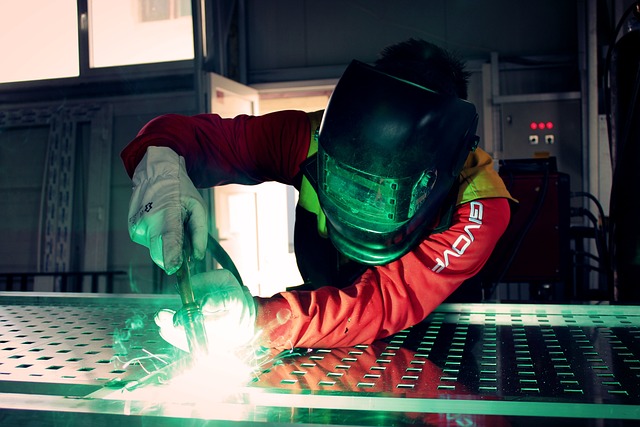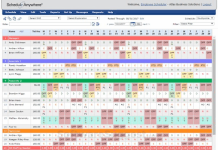
When it comes to creating and manufacturing a product, there are several steps involved. From conceptualizing and designing to prototyping and testing, then manufacturing and production, it can be a complex and challenging process. However, with the right guidance and tools, you can successfully create and manufacture a product that meets your needs and goals. In this article, we will explore the importance of Automotive Core Tools Training in product design, the steps involved in product creation, common challenges, and tips for success.
Importance of Automotive Core Tools Training in Product Design
Automotive Core Tools Training is critical in product design because it provides a standardized approach to product development. The Automotive Industry Action Group (AIAG) developed the Automotive Core Tools to ensure that automotive suppliers and manufacturers meet customer requirements consistently. The Automotive Core Tools are five key processes, including Advanced Product Quality Planning (APQP), Production Part Approval Process (PPAP), Failure Mode and Effects Analysis (FMEA), Measurement System Analysis (MSA), and Statistical Process Control (SPC).
APQP is a process that ensures that the product meets the customer’s needs and expectations. It includes defining the product’s scope, identifying customer requirements, developing a timeline, and monitoring the product’s progress. PPAP is a process that verifies that the product meets the customer’s specifications and regulatory requirements. It includes submitting samples, documents, and data to the customer for approval. FMEA is a process that identifies potential failures and their effects on the product, and develops plans to mitigate them.
MSA is a process that ensures that the measurement system is accurate and reliable. It includes evaluating the measurement system’s capability, identifying sources of variation, and estimating the measurement error. SPC is a process that monitors the production process and ensures that it is stable and predictable. It includes collecting and analyzing data, identifying sources of variation, and taking corrective action.
By following the Automotive Core Tools processes, you can ensure that your product meets the customer’s requirements, is of high quality, and is delivered on time. Automotive Core Tools Training provides you with the knowledge and skills to implement these processes effectively.
Steps in Product Creation: Conceptualizing and Designing
The first step in product creation is conceptualizing and designing. This involves identifying a need or a problem that the product will solve, researching the market and competitors, and developing a concept for the product.
Once you have a concept, you can start designing the product. This includes developing a detailed design that meets the customer’s requirements, creating drawings and specifications, and selecting the materials and components. It is important to consider the product’s functionality, aesthetics, and cost when designing it.
During the design phase, you should also consider the product’s manufacturability. This means designing the product in a way that can be produced efficiently and cost-effectively. You should also consider the product’s assembly process and ensure that it is easy to assemble and disassemble.
Steps in Product Creation: Prototyping and Testing
Once you have a design, the next step is to create a prototype. A prototype is a working model of the product that allows you to test and refine the design. There are several types of prototypes, including visual models, functional prototypes, and production prototypes.
Visual models are used to test the product’s aesthetics and functionality. They are typically made of plastic or foam and are not functional. Functional prototypes are used to test the product’s functionality and performance. They are typically made of the same materials and components as the final product. Production prototypes are used to test the product’s manufacturability and production processes.
Once you have a prototype, it is essential to test it thoroughly. Testing involves evaluating the product’s performance, reliability, and safety. You should also test the product’s compatibility with other products and systems. Testing can be done through simulations, laboratory testing, and field testing.
Steps in Product Creation: Manufacturing and Production
Once you have a finalized design and a tested prototype, the next step is to manufacture and produce the product. This involves selecting the manufacturing process, setting up the production line, and producing the product.
Manufacturing processes can vary depending on the product and the materials used. Some common manufacturing processes include injection molding, casting, stamping, and extrusion. It is important to select a manufacturing process that is efficient, cost-effective, and produces high-quality products.
Setting up the production line involves designing the assembly process, selecting the equipment and tools, and training the operators. It is important to ensure that the assembly process is efficient and error-free.
Producing the product involves following the production plan, monitoring the production process, and ensuring that the product meets the customer’s requirements. It is important to monitor the production process regularly and make adjustments as necessary.
Common Challenges in Product Creation and Manufacturing
Product creation and manufacturing can be challenging and complex. Some common challenges include cost overruns, delays, quality issues, and supply chain disruptions.
Cost overruns can occur when the product design is not optimized for manufacturability, or when unexpected costs arise during production. Delays can occur due to design changes, equipment breakdowns, or supply chain disruptions. Quality issues can arise when the product does not meet the customer’s requirements or when there are defects in the production process. Supply chain disruptions can occur due to natural disasters, political instability, or pandemics.
Tips for Successful Product Creation and Manufacturing
To ensure successful product creation and manufacturing, there are several tips to keep in mind. Firstly, it is important to have a clear understanding of the product requirements and customer needs. This will help you to design a product that meets the customer’s expectations. Secondly, it is important to consider the product’s manufacturability during the design phase. This will help you to produce the product efficiently and cost-effectively.
Thirdly, it is important to test the product thoroughly before production. This will help you to identify any issues or defects and make necessary changes. Fourthly, it is important to monitor the production process regularly and make adjustments as necessary. This will help you to ensure that the product meets the customer’s requirements and is of high quality. Finally, it is important to maintain good communication with suppliers, customers, and stakeholders throughout the product creation and manufacturing process.
Automotive Core Tools Training for Product Manufacturing
Automotive Core Tools Training is essential for product manufacturing because it provides a standardized approach to product development. By following the Automotive Core Tools processes, you can ensure that your product meets the customer’s requirements, is of high quality, and is delivered on time. Automotive Core Tools Training provides you with the knowledge and skills to implement these processes effectively.
Tools and Software for Product Creation and Design
There are several tools and software available for product creation and design. Some common tools include Computer-Aided Design (CAD) software, 3D printers, and simulation software.
CAD software allows you to create detailed designs and specifications for the product. 3D printers allow you to create physical prototypes quickly and easily. Simulation software allows you to test the product’s performance and functionality in a virtual environment.
Conclusion
Creating and manufacturing a product can be a complex and challenging process. However, by following the Automotive Core Tools processes, using the right tools and software, and implementing best practices, you can ensure successful product creation and manufacturing. Remember to consider the product’s requirements and manufacturability, test the product thoroughly, and maintain good communication with suppliers, customers, and stakeholders throughout the process. With these tips and Automotive Core Tools Training, you can create and manufacture a product that meets your needs and goals.











